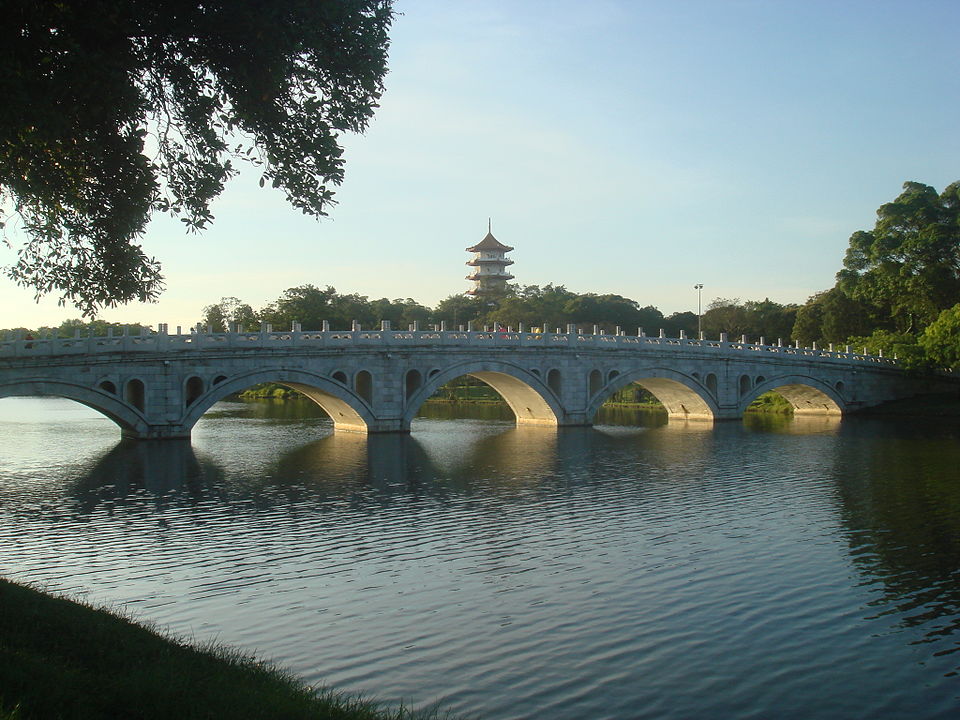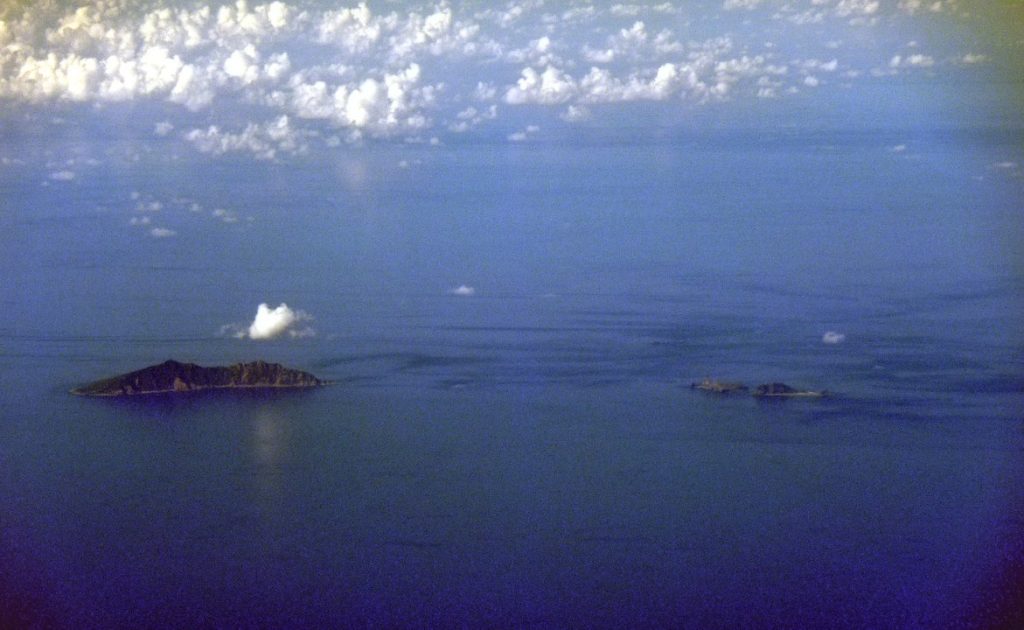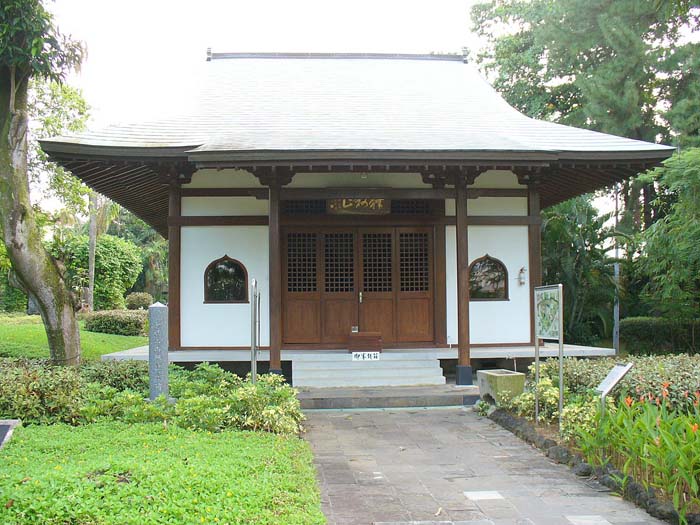
The murder of the former Prime Minister Shinzo Abe created shock waves to the world, including Singapore. Prime Minister Lee Hsien Loong wrote on his Facebook wall immediately after Abe was shot on July 8th, adding his condolences after Abe’s death was announced. Followingly, President Halimah Yacob, Foreign Minister Vivian Balakrishnan, Law Minister K. Shanmugam, and Vice Prime Minister Lawrence Wong (the presumptive next fifth generation Prime Minister), posted condolences in their Facebook walls and Twitter feeds. On July 9, 2022, Lee sent an official condolence message to Prime Minister Kishida on behalf of the Government of Singapore (MFA, 2022a). These actions are understandable, considering the tragic death of Abe in a democratic society that has been arguably one of the safest countries in Asia. Still, there are many democratic leaders that had not immediately reacted to the incident, and Singapore’s diplomatic move was indeed faster than Japan’s foremost ally, the United States. Obviously, the leaders of great powers had a plethora of immediate issues that they needed to deal with, but the point is that this close relationship between Abe and Singapore is puzzling.
Singapore is neither Japan’s defense ally nor strategic partner, but those messaging and decisions were made earlier than the United States. Singapore tends to maintain political neutrality in the international realm because it always attempts to avoid being entrapped by great power competitions (Teo & Koga, 2022). On the other hand, Abe was known as a hawkish politician who showed a firm stance toward and attempted to balance against China by formulating international coalitions. Abe in 2012 wrote an op-ed, “Asia’s Democratic Security Diamond,” which proposed the revival of the Australia-India-Japan-US quadrilateral grouping, the so-called “Quad” (Abe, 2012; Koga, 2022). How can we characterize Japan-Singapore relations under Prime Minister Abe? Did Singapore just attempt to keep a suitable diplomatic distance with Japan?
Perhaps, but if so, Singapore did not have to take such a quick move. The fundamental answer lies in Abe’s consistent diplomatic, economic, and defense engagement with Singapore for seven years from 2013 to 2020. While these engagements were essentially based on Japan’s national interests, Abe did not simply deprioritize Singapore as a small state in Southeast Asia, and he nurtured political trust with Singaporean leaders. Even though Abe was a controversial figure domestically and internationally, Singapore has come to develop respect for Abe. This is his diplomatic legacy to the bilateral relations.

Abe’s Proactive Diplomacy Toward Singapore
To be sure, Japan-Singapore relations has been generally stable, and their socio-economic ties have been also strengthened across generations, particularly since Japan concluded the free trade agreement with Singapore in 2002, the very first country to have such an agreement (MOFA, 2002). Along with the socio-cultural cooperation through such programs as the JSPP21 (Japan-Singapore Partnership Programme for the 21st Century) that was launched in 1994 to facilitate bilateral cooperation for joint training in areas, including education, healthcare, and industrial development (MFA, n.d.), Japan has constantly attracted Singaporean tourists, increasing from approximately 63,000 in 2004 to 200,000 in 2012 (JNTO, 2021).
However, Abe’s active summit diplomacy toward Singapore during his second term was unprecedented. The frequency of diplomatic interactions at the summit and ministerial level significantly increased (MOFA, 2022a). This was certainly strategically and politically motivated to cooperate with Southeast Asian states to push back on China’s maritime assertiveness in the East and South China Seas. Indeed, when Abe assumed his premiership in 2012, the Sino-Japanese relations were at one of the worst phases in its post-Cold War era (Koga, 2016).
In 2010, Japan and China had the incident near Senkaku Islands where a Chinese fishing boat rammed into two Japanese coast-guard vessels. This increased already-tensed relationship because of the maritime border disputes between Japan and China, while political tensions still lingered because of the anti-Japanese and anti-Chinese sentiment caused by Prime Minister Junichiro Koizumi’s regular visit to the Yasukuni Shrine – Japanese war shrine that enshrined Class-A war criminals in World War II – and Chinese massive demonstrations and vandalism against Japanese stores in China in the early 2000s in response to Koizumi’s visits.
In 2012, Japan obtained the ownership of three islands in the Senakakus by purchasing from the private owner. The Noda administration of the Democratic Party of Japan, which was considered to be a relatively leftist government in comparison with Abe’s Liberal Democratic Party, took this action in order to prevent the nationalist Tokyo governor, Shintaro Ishihara, from buying the islands and building facilities there. However, China considered it “nationalization” that consolidated the ownership of the Senkaku Islands and took more assertive actions by increasing its coast-guard and paramilitary presence near Senkakus from September 2012.

In this context, Abe proactively engaged with Southeast Asian states for three reasons. The first is to seize an opportunity to cooperate with Southeast Asian states in the maritime domain by witnessing that China’s assertive behavior in the South China Sea (Green, et. al, 2017). Both Japan and the Association of Southeast Asian Nations (ASEAN) member states faced a similar pressure from China, Abe decided to emphasize the importance of international law, including the UN Convention on the Law of the Sea (UNCLOS), to collectively constrain China’s behavior in the maritime domain. This is well illustrated by Abe’s planned policy speech in Indonesia, “The Bounty of the Open Seas,” and his participation in the 2014 Shangri-La Dialogue, discussing “Three principles” of the rule of law at sea (MOFA, 2013, 2014).
The second is to successfully celebrate the 40th anniversary of Japan-ASEAN Dialogue relations in 2013. It was a great opportunity for Japan to actively interact with and enhance comprehensive cooperation with ASEAN member states. This led Abe to make visits to every ASEAN member state and hold a summit meeting, which made Abe the first prime minister to visit all Southeast Asian states within one year. In December, Japan and ASEAN held the Tokyo summit meeting to emphasize the importance of international maritime law (Lies and Takenaka, 2013).
The third is to reassure Southeast Asian states that Japan’s proactive diplomacy and new security policies would not threaten regional balance. Abe launched new initiatives, including “proactive contribution to peace” that aimed to ensure open sea and open economy in the world as well as security reforms to relax Japan’s political and constitutional constrains on the use of a right to collective self-defense. (Japan GOV, 2014; Library of Congress, 2014). As these initiatives would instigate concerns about Japan’s new security and political role in East Asia and beyond, Abe regularly explained them with his counterparts in Southeast Asia.

Singapore’s Response: Strategic Consistency
For its part, Singapore welcomed Abe’s proactive engagement, but at the same time, the country was cautious and carefully monitored the degree to which Japan had a strategic motivation to confront China. As a result, Singapore focused more on politically sensitive cooperative areas, such as the advancement of regional and bilateral economic cooperation. When Prime Minister Lee made a speech at the 19th Nikkei International Conference on the Future of Asia in May 2013, he expressed his intention to consistently persuade Japan to join in the Trans-Pacific Partnership while arguing Japan’s importance of economic development and growth in the Asia-pacific region despite diplomatic tensions with neighboring states caused by the historical legacy (PMO, 2013). He did not touch upon any security or political issues directly.
In fact, Singapore has never altered such a cautious diplomatic stance – not taking sides – and rather expressed its concerns frankly whenever the country felt Japan’s behavior or statements would cause regional stability. In December 2013, for instance, Abe decided to visit the Yasukuni Shrine, which invited not only criticism from South Korea and China but also statement of “disappointment” from the United States, which Singapore also took the similar stance (Smith, 2013). Considering the diplomatic frictions caused by Abe’s visit, Singapore Ministry of Foreign Affairs expressed “regret” (MFA, 2013). According to Bilahari Kausikan, a former permanent secretary of foreign ministry, mentioned it was more “sorrow” than “anger” as the regional tension might continuously rise.
There is also a consistent strategic difference between Japan and Singapore. In 2013, Lee expressed Singapore’s support for Abe’s “Proactive Contribution to Peace,” but such support was not taken for granted. Particularly, when Abe launched the strategic initiative in 2016, “Free and Open Indo-Pacific Strategy” (now “Free and Open Indo-Pacific,” or FOIP), Singapore has remained relatively reticent about Japan’s FOIP. Even when the United States also started using the same term, free and open Indo-Pacific, and this drew the international attention in 2017, Singapore was cautious.
In 2018, Foreign Minister Vivian Balakrishnan stated that, without the clarification of the strategic objectives of the FOIP concept and the Quad promoted by Japan and the United States, Singapore would monitor the development without being involved (Yong, 2018). Also, although Prime Minister Lee mentioned in November 2018 that Japan’s FOIP “align[ed] well” with Singapore’s priorities in terms of the rule of law in sea and infrastructure development, the country did not express its diplomatic support (Yi, 2018). This is mainly because the term connoted counter-China strategy. Instead, after ASEAN created its own Indo-Pacific vision, the ASEAN Outlook on the Indo-Pacific (AOIP) in 2019, Singapore has begun to focus on AOIP.
Cultivating Personal Relationships
That said, Abe continuously engaged with Singapore. The interesting feature of his diplomatic stance was persistence – his resolve to follow through once he believed it important. Even though it is extremely difficult to persuade Singapore (or any of the Southeast Asian states) to take sides with any great power, Abe kept engaging with the country. He held four summit meetings in 2013 and three in 2014. Even if not gaining full-support for every strategic initiative that Japan launched, Abe always tried to find potential areas of cooperation, such as Japan’s bid for the Malaysia (Kuala Lumpur)-Singapore highspeed railway.
Furthermore, Abe considered it important to pay respect for Singapore’s leading figures. In March 2015, he attended the state funeral of Lee Kuan Yew along with ASEAN leaders and the leaders of US allies, namely Australian Prime Minister Tonny Abbott and South Korean President Park Geun-Hye, while leaders from the United States and China were absent (MFA, 2015). Abe also stopped over Singapore on the way to Kenya to attend the Sixth Tokyo International Conference on African Development (TICAD VI) and paid a condolence visit to the late former Singapore President S. R. Nathan, which not many foreign leaders did (MOFA, 2016). Admittedly, Abe’s true intention was not clear, yet this behavior resonated with the Fukuda Doctrine in 1977, by which Japan promised to deepen a “heart-to-heart and person-to-person” relationship with Southeast Asian states.
After 2016, Japan’s diplomatic focus shifted relatively to the United States, US allies, and its partners, particularly India, under the name of FOIP. Except for key regional and global meetings, such as ASEAN-related summits and G20, leaders’ interaction became less frequent. Indeed, there were only five meetings: one in 2017, two in 2018, and two in 2019. Rather than the summit diplomacy, at this point, the foreign ministers, particular between Singapore’s Balakrishnan and Japan’s Taro Kono, engaged with each other for information exchange. After the COVID-19 pandemic occurred in 2020, Abe was not able to hold the summit with Lee and eventually resigned because of the relapse of his chronic disease.
It is noted that during Abe’s term, there was no radical change in Japanese and Singaporean public views to each other. This is because both countries generally see each other positively. While there is no specific poll with regard to Japanese views toward Singapore, according to the poll conducted by Japanese Cabinet Office, Japan started to view Southeast Asia more favorably, slightly increasing its view from 67.9 percent in 2012 to 71.5 percent in 2022 (Cabinet Office, Japan, 2022). On the other hand, the poll conducted by the Ministry of Foreign Affairs of Japan indicates that Singaporean considered Japan as the third most important country while views second or third most trustful country after the United States and China (MOFA, 2022b). This is also reflected experts’ view, which showed that Japan was constantly seen as the top county that would “do the right thing” for global peace and security prosperity from 2019 to 2022 among major powers, including the United States, China, and EU (ISEAS Yusof Ishak Institute, 2022). That said, considering Abe’s proactive political and strategic posture toward the Indo-Pacific region and China, Japan saw relative success for reassuring Singaporean public that Japan would not become a threat.
Singapore Prime Minister Lee Hsien Loong wishes his Japanese counterpart Abe Shinzo a good recovery after his resignation due to health reasons in 2020.
Conclusion
Abe was a polarizing political figure in Japan and the world. His nationalistic narratives often raised domestic and international concerns as they could provoke neighboring states, particularly China. This was Singapore’s lingering concerns. Yet, as a prime minister, he restrained himself and enthusiastically cultivated strategic and personal ties with world leaders. Among them, Singapore was one of the countries that Japan successfully developed such friendship. Prime Minister Lee’s physical presence at Prime Minister Abe’s funeral in Japan nn September 27, 2022 is case in point (MFA, 2022b). Lee stated, “Under [Abe’s] leadership, Singapore-Japan relations deepened and strengthened. Mr. Abe will be remembered as a good friend of Singapore.” As Japan’s diplomacy toward Southeast Asia, Abe’s accomplishment should not be easily forgotten.
Kei Koga
Associate Professor, Nanyang Technological University, Singapore
Reference
Abe, S. (2012, 27 December). ‘Asia’s Democratic Security Diamond.’ Project Syndicate. https://www.project-syndicate.org/magazine/a-strategic-alliance-for-japan-and-india-by-shinzo-abe?barrier=accesspaylog. Accessed: November 21, 2022.
Cabinet Office, Japan. (2022, 21 January). “Gaiko ni kansuru yoron chosa” [Public Poll on Diplomacy]. https://survey.gov-online.go.jp/index-gai.html. Accessed: November 21, 2022.
Green, M., Hicks, K., Cooper, Z., Schaus, J., and Douglas, J. (2017, May 27). ‘Counter-Coercion Series: Scarborough Shoal Standoff.’ Asia Maritime Transparency Initiative. https://amti.csis.org/counter-co-scarborough-standoff/. Accessed: November 21, 2022.
ISEAS Yusof Ishak Institute. (2022). ‘State of Southeast Asia Survey.” https://www.iseas.edu.sg/category/articles-commentaries/state-of-southeast-asia-survey/. Accessed: November 21, 2022.
Japan GOV (The Government of Japan). (2014). ‘Japan’s Proactive Contribution to Peace.” https://www.japan.go.jp/tomodachi/2014/spring-summer2014/japans_roactive_contribution_to_peace.html. Accessed: November 21, 2022.
JNTO (Japan National Tourism Organization). (2021). ‘Kokuseki betsu/ mokuteki betsu honichi gaikyakusu (kitechi)’ [The number of foreign tourists: nationalities and purposes]. https://www.jnto.go.jp/jpn/statistics/tourists_2021df.pdf. Accessed: November 21, 2022.
Kausikan, B. (2014, 20 January). ‘Yasukuni visits, revisited.’ https://www.straitstimes.com/singapore/yasukuni-visits-revisited. Accessed: November 21, 2022.
Koga, K. (2022). ‘Quad 3.0: Japan, Indo-Pacific and Minilateralism.’ East Asian Policy, 14(1), 20-38. https://www.worldscientific.com/doi/abs/10.1142/S1793930522000022.
Koga, K. (2016). ‘The rise of China and Japan’s balancing strategy: critical junctures and policy shifts in the 2010s.” Journal of Contemporary China, 25(1), 777-791.
Library of Congress. (2014). ‘Japan: Cabinet Adoption of Constitutional Interpretation Allowing Japan to Engage in Collective Self Defense.’ https://www.loc.gov/item/global-legal-monitor/2014-08-04/japan-cabinet-adoption-of-constitutional-interpretation-allowing-japan-to-engage-in-collective-self-defense/#:~:text=(Aug.,(collective%20self%2Ddefense). Accessed: November 21, 2022.
Lies, E., and Takenaka, K. (2014, 13 December). ‘Japan-ASEAN call for freedom of air and seas, with tensions high over China.’ https://www.reuters.com/article/cnews-us-japan-asean-idCABRE9BD01F20131214. Accessed: November 21, 2022.
Teo, A., and Koga, K. (2022). ‘Conceptualizing equidistant diplomacy in international relations: the case of Singapore.’ International Relations of the Asia-Pacific, 22(3), 375-409. https://academic.oup.com/irap/article/22/3/375/6333516.
MFA (Ministry of Foreign Affairs, Singapore). (2013, 29 December). ‘MFA Spokesman’s Comments in response to media queries on Japanese Prime Minister Shinzo Abe’s visit to the Yasukuni Shrine on 26 December 2013.’ https://www.mfa.gov.sg/Newsroom/Press-Statements-Transcripts-and-Photos/2013/12/MFA-Spokesmans-Comments-in-response-to-media-queries-on-Japanese-Prime-Minister-Shinzo-Abes-visit-to. Accessed: November 21, 2022.
MFA. (2015, 27 March). ‘Channel NewsAsia: Foreign leaders to attend Lee Kuan Yew’s State Funeral on Sunday.’ https://www.mfa.gov.sg/Overseas-Mission/Geneva/Mission-Updates/2015/03/press_20150327. Accessed: November 21, 2022.
MFA. (2022a, 9 July). ‘Condolence Message from Prime Minister Lee Hsien Loong on the Passing of Former Japanese Prime Minister Mr Abe Shinzo.’ https://www.mfa.gov.sg/Newsroom/Press-Statements-Transcripts-and-Photos/2022/07/20220709-Condolence-Letter-Japan. Accessed: November 21, 2022.
MFA. (2022b, 27 September). ‘Visit of Prime Minister Lee Hsien Loong to Japan for the State Funeral of Former Japanese Prime Minister Abe Shinzo, 27 September 2022.’ https://www.mfa.gov.sg/Newsroom/Press-Statements-Transcripts-and-Photos/2022/09/20220927pmvj. Accessed: November 21, 2022.
MFA. (n.d.) ‘MFA Press Statement: Japan-Singapore Partnership Programme for the 21st Century (JSPP21).’ https://www.mfa.gov.sg/Newsroom/Press-Statements-Transcripts-and-Photos/2007/07/MFA-Press-Statement-JapanSingapore-Partnership-Programme-for-the-21st-Century-JSPP21. Accessed: November 21, 2022.
MOFA (Ministry of Foreign Affairs of Japan), (1977, 18 August). ‘Speech by Prime Minister Takeo Fukuda (Fukuda Doctrine Speech).’ In “The World and Japan” Database. https://worldjpn.net/documents/texts/docs/19770818.S1E.html. Accessed: November 21, 2022.
MOFA. (2002) ‘The Japan-Singapore Economic Partnership Agreement (JSEPA).” https://www.mofa.go.jp/region/asia-paci/singapore/jsepa.html. Accessed: November 21, 2022.
MOFA. (2013, 18 January). ‘The Bounty of the Open Seas: Five New Principles for Japanese Diplomacy.’ https://www.mofa.go.jp/announce/pm/abe/abe_0118e.html. Accessed: November 21, 2022.
MOFA. (2014, 30 May). ‘The 13th IISS Asian Security Summit -The Shangri-La Dialogue-Keynote—Address by Shinzo ABE, Prime Minister, Japan: “Peace and prosperity in Asia, forevermore: Japan for the rule of law. Asia for the rule of law. And the rule of law for all of us.” https://www.mofa.go.jp/fp/nsp/page4e_000086.html. Accessed: November 21, 2022.
MOFA. (2016, 25 August). ‘Prime Minister Shinzo Abe Pays a Condolence Call Following the Death of the Former President of Singapore.’ https://www.mofa.go.jp/s_sa/sea2/sg/page4e_000526.html. Accessed: November 21, 2022.
MOFA. (2022a, 26 January). ‘Singapo-ru kyowakoku: kakono yojin orai/kaidan” [Republic of Singapore: Past VIP Visitors/Meetings]. https://www.mofa.go.jp/mofaj/area/singapore/visit/index.html. Accessed: November 21, 2022.
MOFA. (2022b, 25 May). ‘Opinion Poll on Japan.’ https://www.mofa.go.jp/policy/culture/pr/index.html. Accessed: November 21, 2022.
PMO (Prime Ministers’ Office Singapore). (2013, 23 May). ‘Speech by Prime Minister Lee Hsien Loong at the 19th Nikkei International Conference on the Future of Asia.’ https://www.pmo.gov.sg/Newsroom/speech-prime-minister-lee-hsien-loong-19th-nikkei-international-conference-future-asia. Accessed: November 21, 2022.
Smith, S. (2013, 30 December). ‘Abe’s Yasukuni Visit: The Consequences?’ https://www.cfr.org/blog/abes-yasukuni-visit-consequences. Accessed: November 21, 2022.
Yi, S.B. (2018, 14 November). ‘Principles of Japan’s Indo-Pacific strategy align with Singapore, Asean priorities: PM Lee.’ https://www.straitstimes.com/singapore/principles-of-japans-indo-pacific-strategy-align-with-singapore-asean-priorities-pm-lee. Accessed: November 21, 2022.
Yong, C. (2018, 14 May). ‘Singapore not joining US, Japan-led free and open Indo-Pacific for now: Vivian Balakrishnan.’ https://www.straitstimes.com/singapore/singapore-not-joining-us-japan-led-free-and-open-indo-pacific-for-now-vivian-balakrishnan. Accessed: November 21, 2022.
